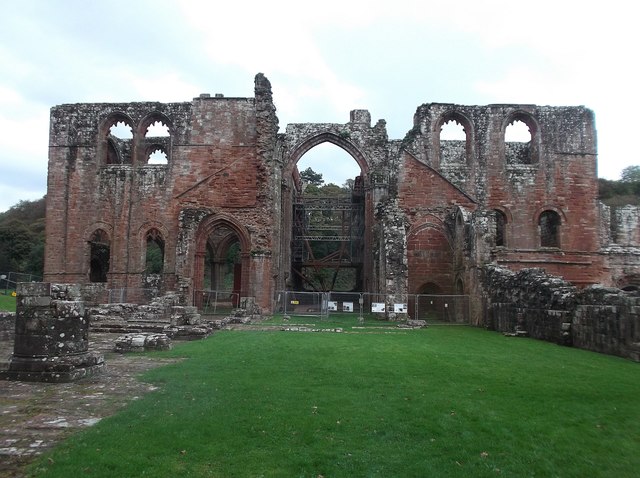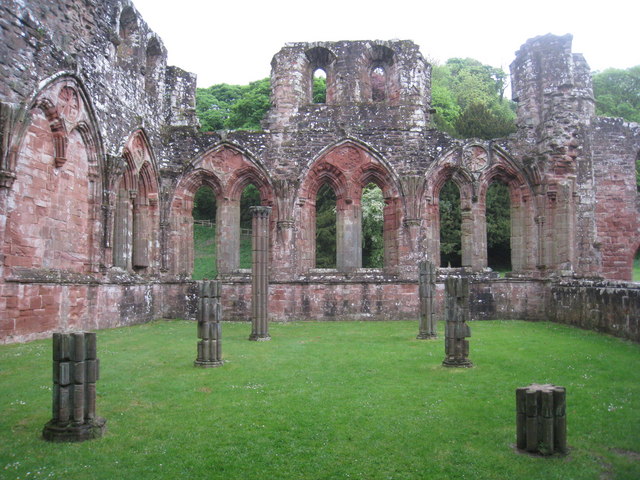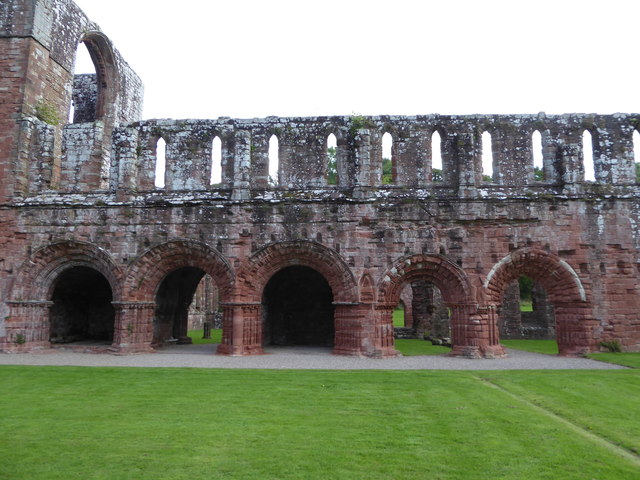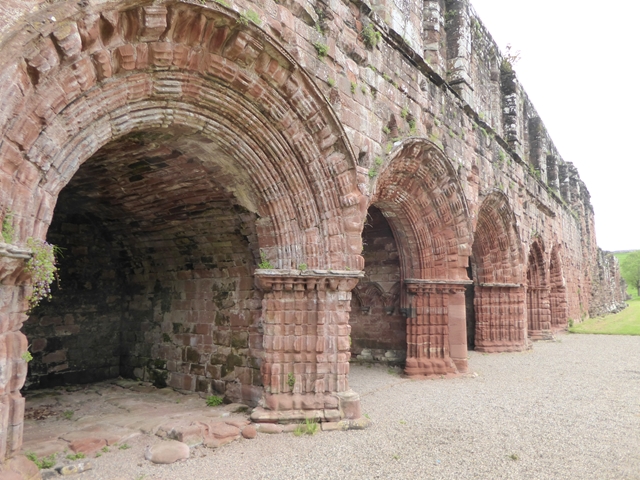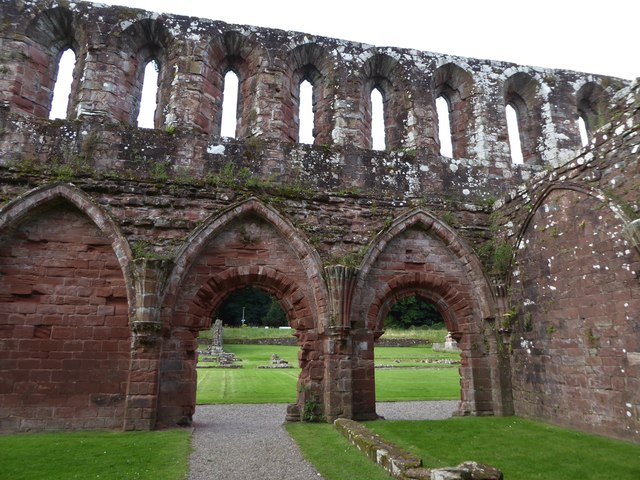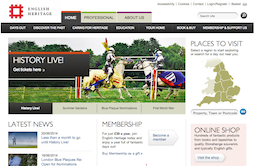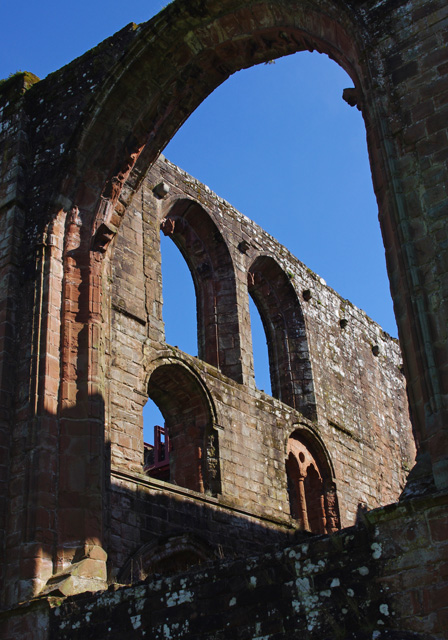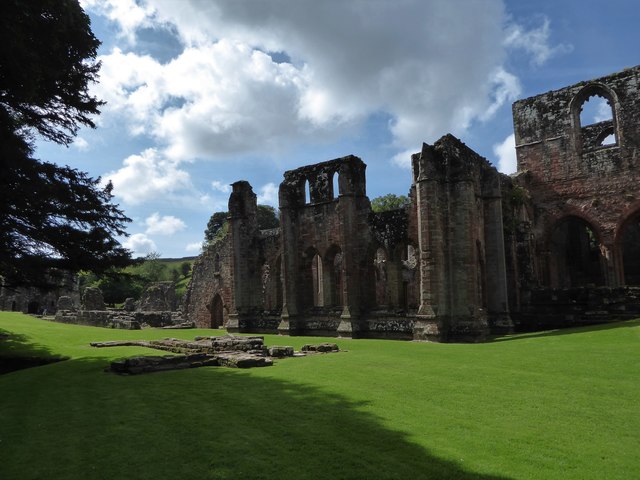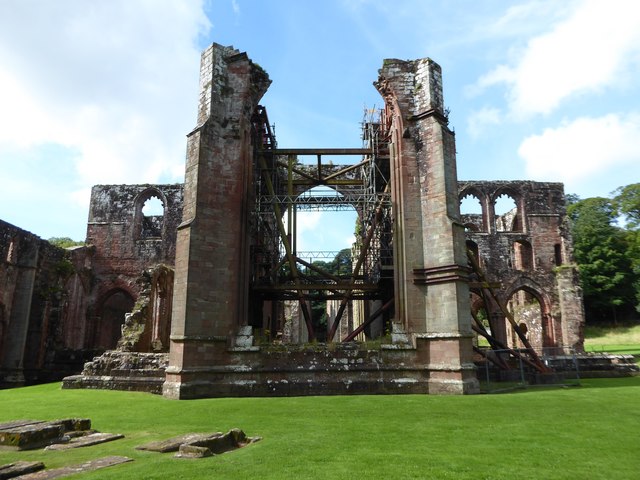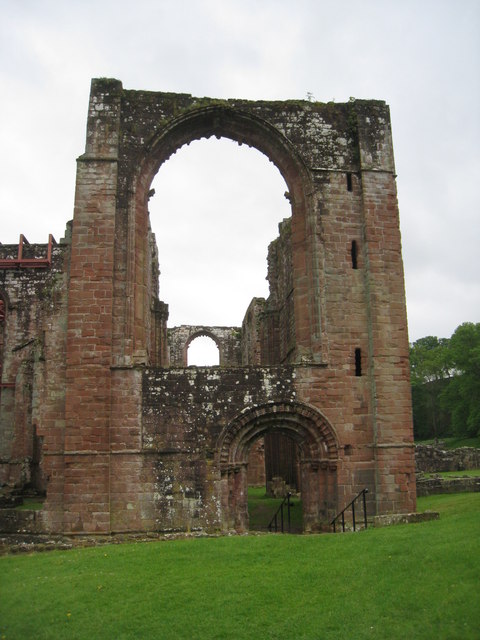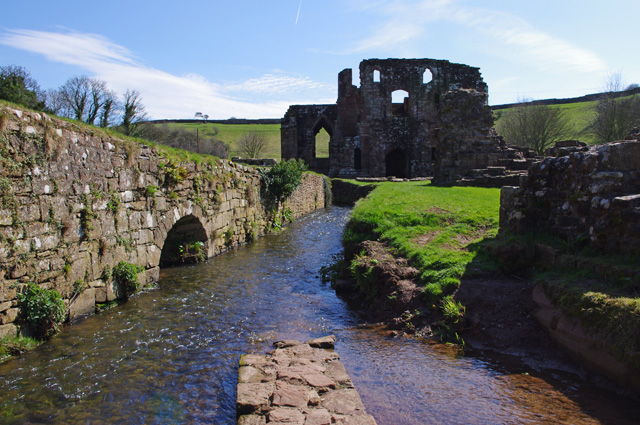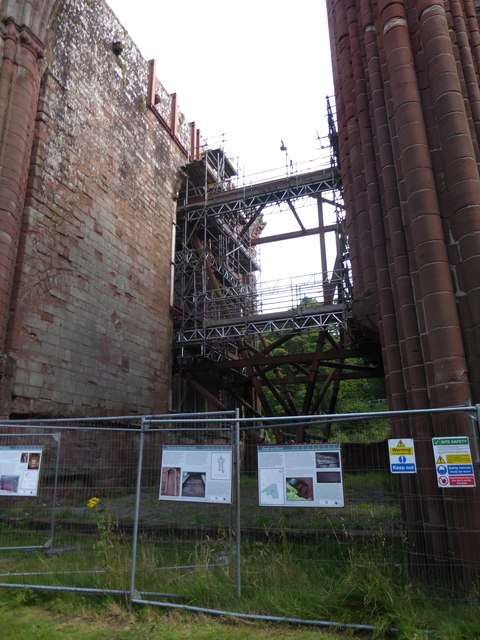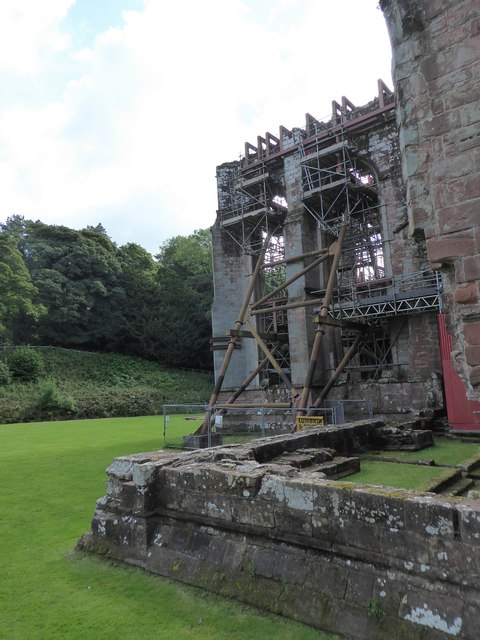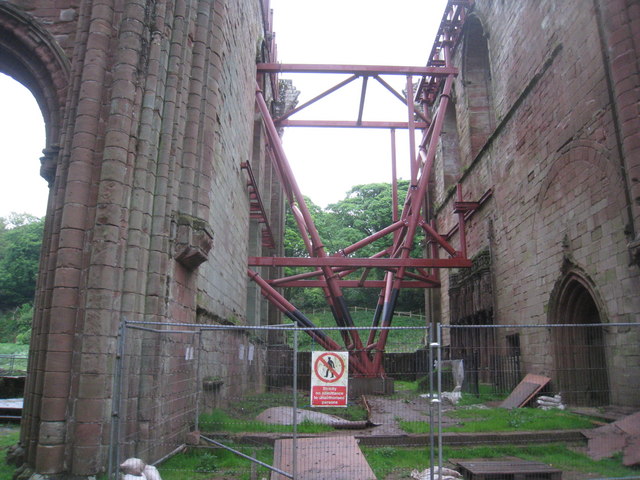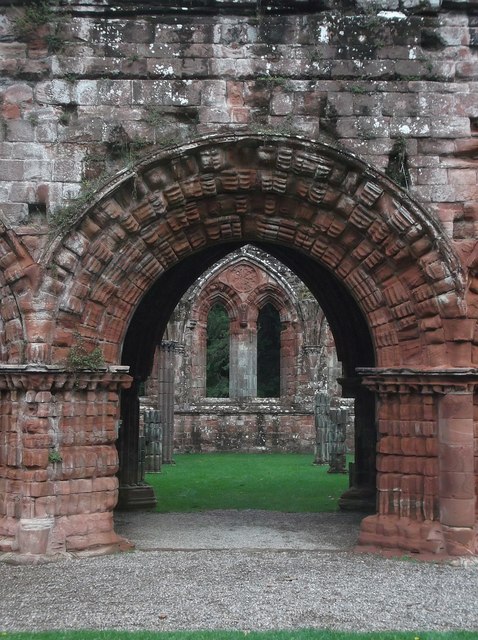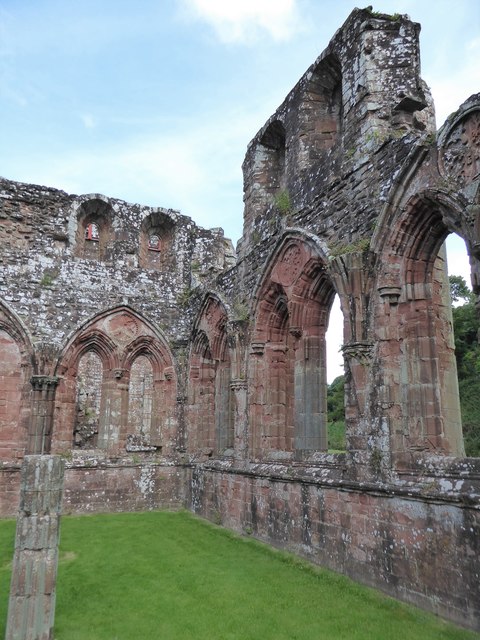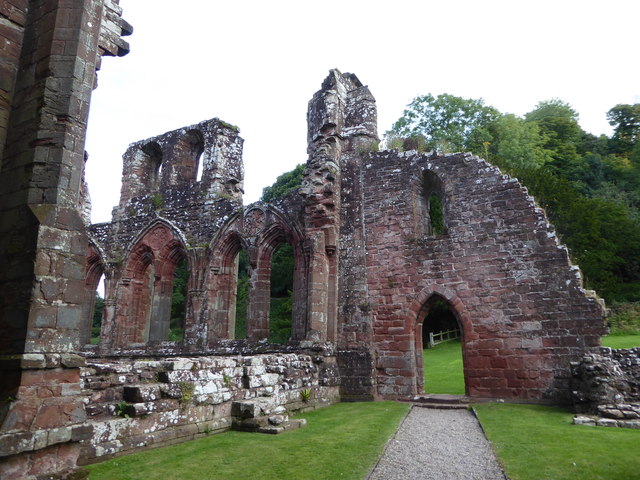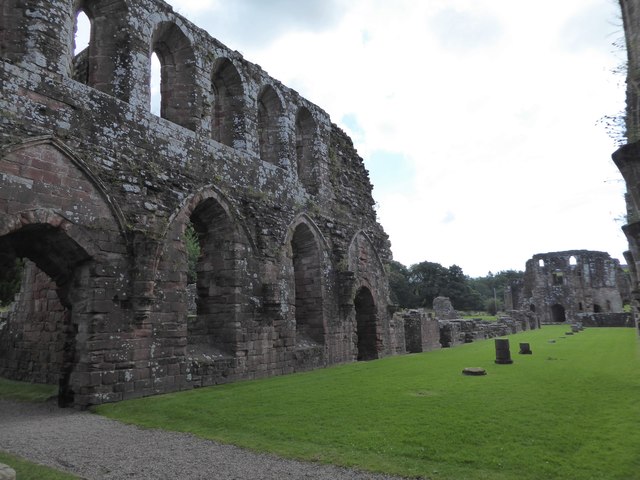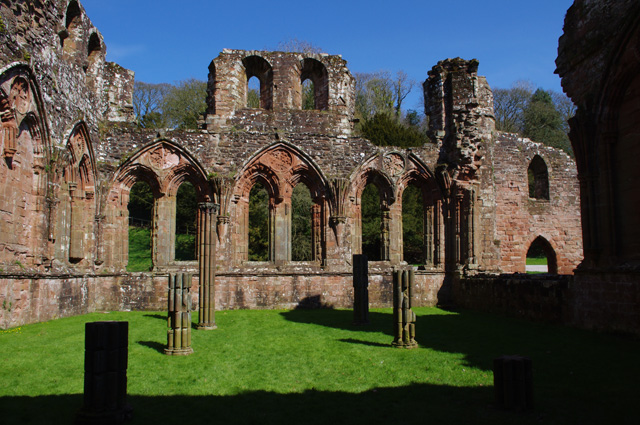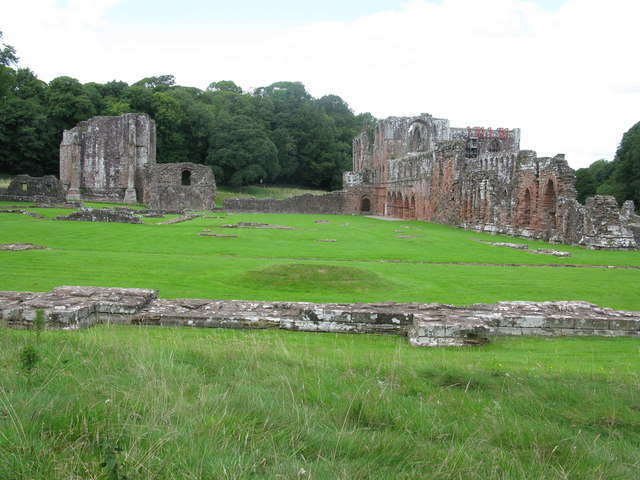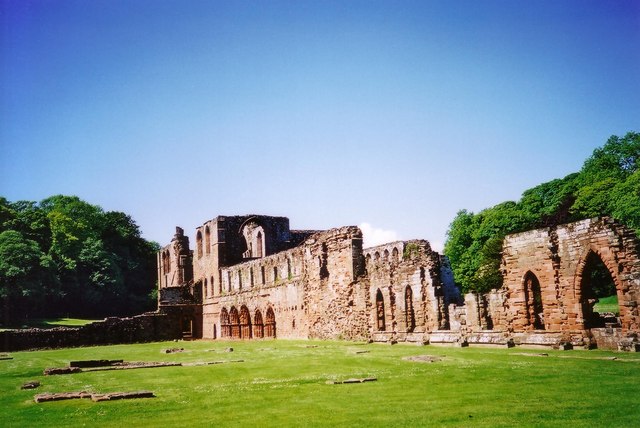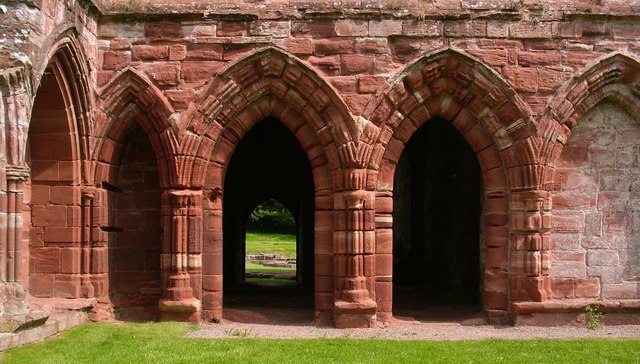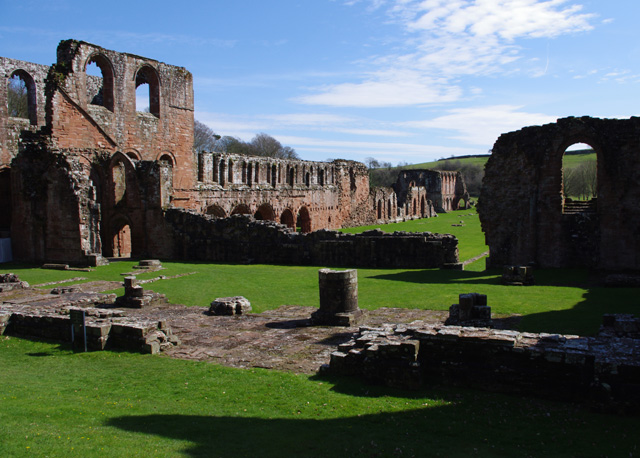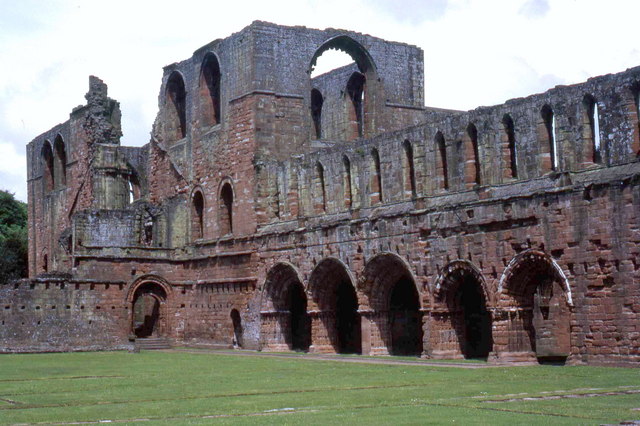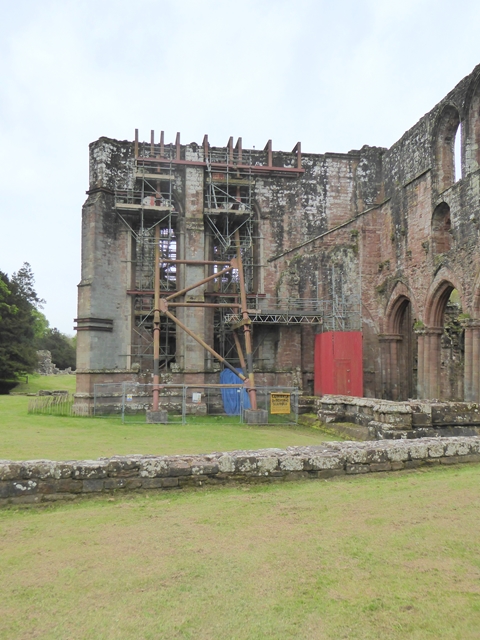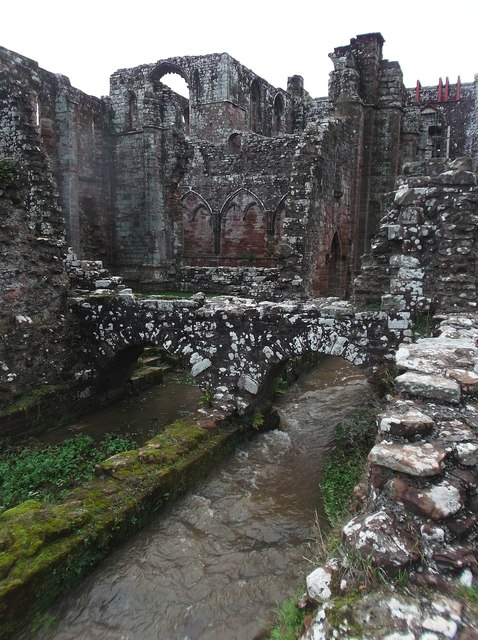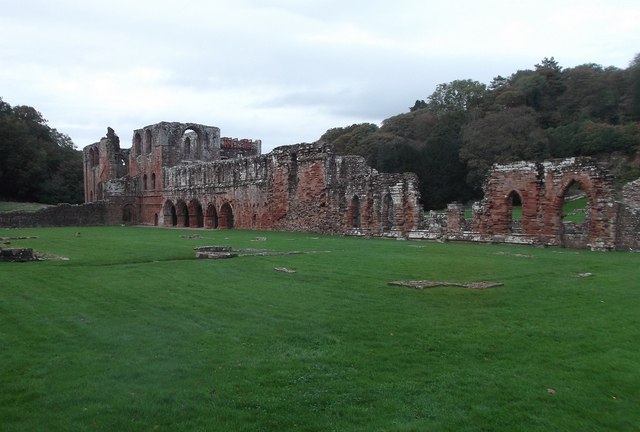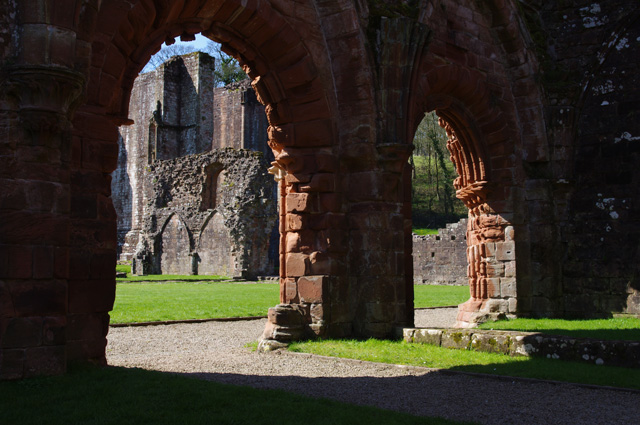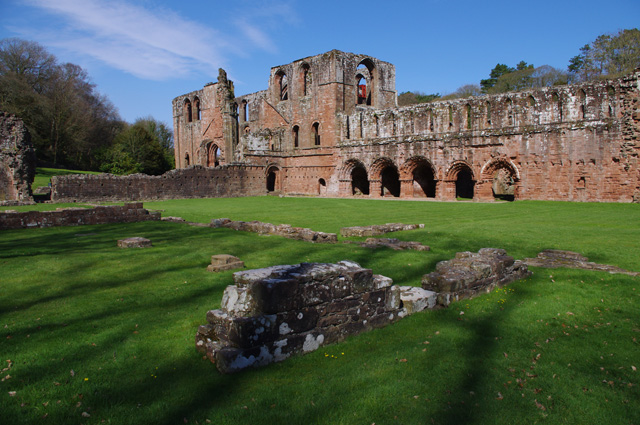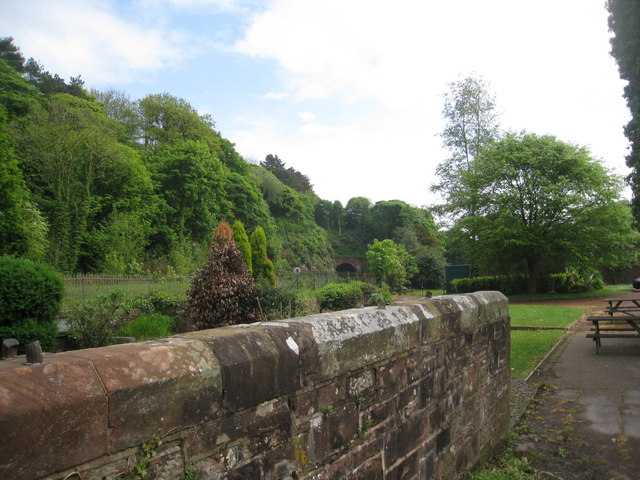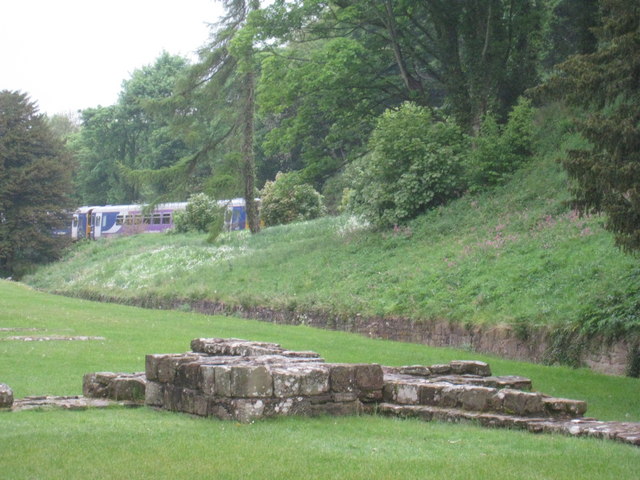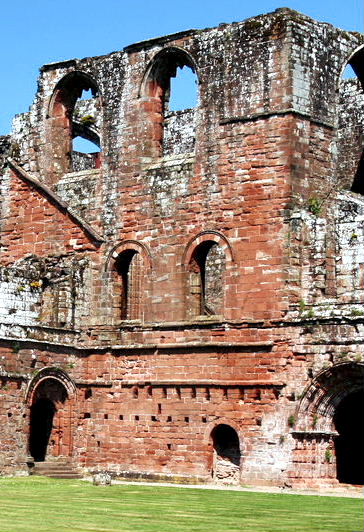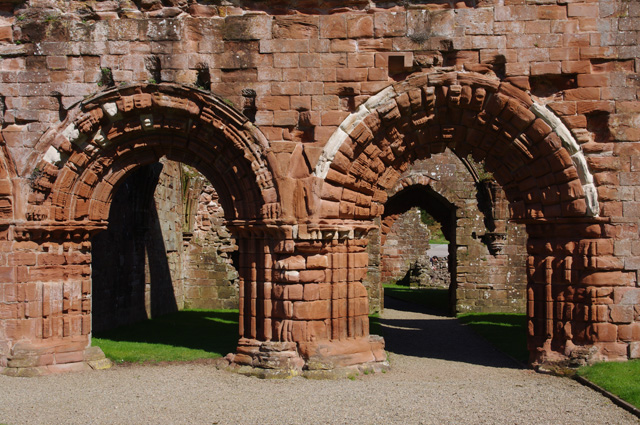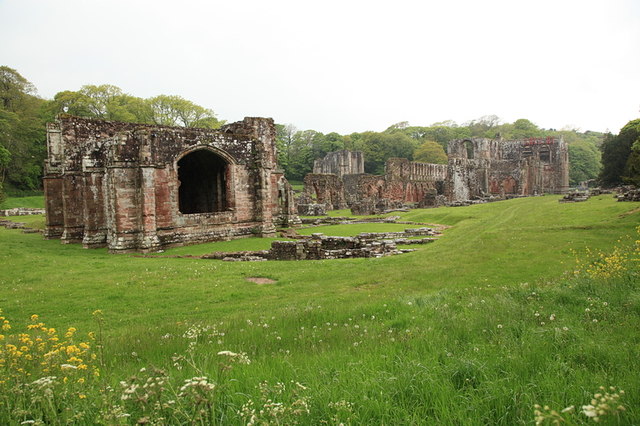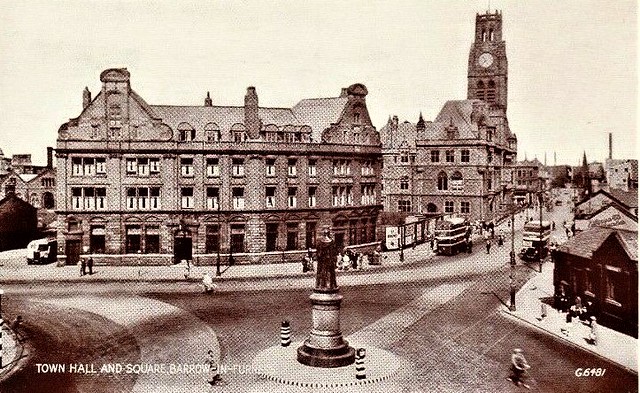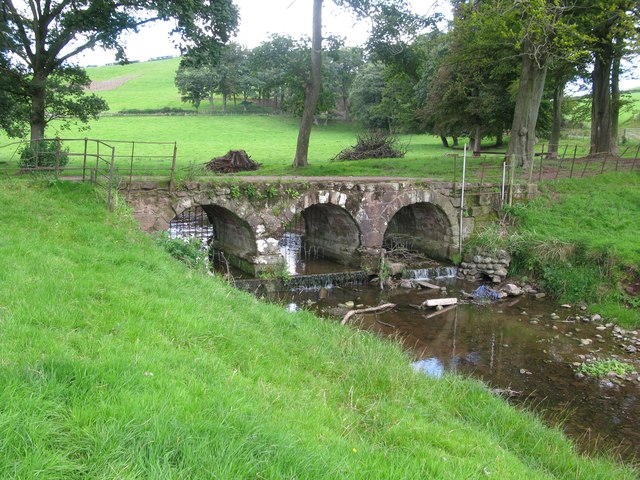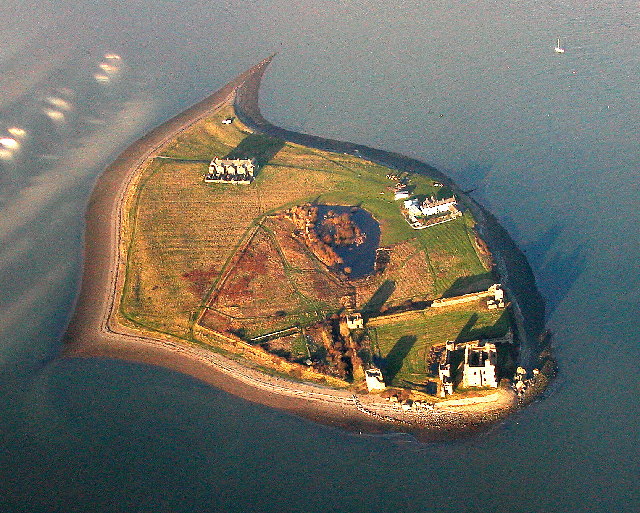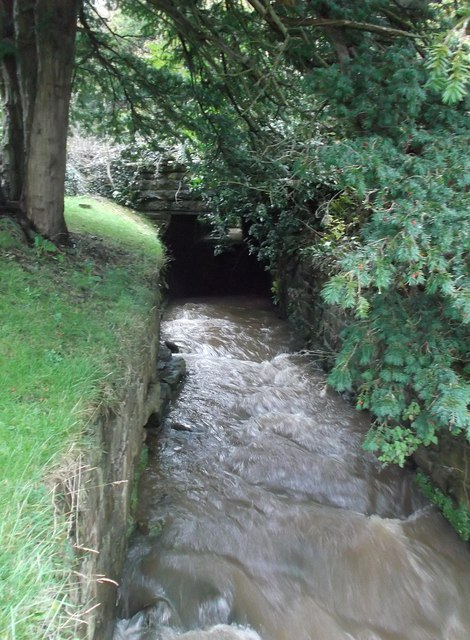Topics > Cumbria > Barrow-in-Furness > Furness Abbey
Furness Abbey
Furness Abbey, or St. Mary of Furness is a former monastery located to the north of Barrow-in-Furness, Cumbria, England. The abbey dates back to 1123 and was once the second-wealthiest and most powerful Cistercian monastery in the country, behind only Fountains Abbey in North Yorkshire.
History of the abbey
Early history
Founded in 1123 by Stephen, Count of Boulogne, it was built originally for the Order of Savigny. Located in the 'Vale of Nightshade', south of Dalton-in-Furness, the abbey is built entirely out of local sandstone. It passed in 1147 to the Cistercians, who gradually enlarged and rebuilt the original ornate church. The majority of the current ruins date from the 12th and 13th centuries. By the 15th century, it had been completely re-modelled and had become the second richest and most powerful - as well as one of the grandest - Cistercian Abbeys in England, behind Fountains Abbey. The gothic-style monastery and its adjacent structures cover an expansive area of land and reach a maximum height of above ground level.
The monks of the abbey were large landowners, and the most powerful body in what was then a remote border territory. In particular, they were heavily influential on the Isle of Man. One of the kings of Mann and the Isles is buried at the abbey, as are many of the Bishops of Sodor and Man. Rushen Abbey on the Isle was built on land owned by the monks. They also owned mines on the island, and built Piel Castle to control trade between the Furness Peninsula and the Isle of Man.
Being about 70 miles down the coast from Scotland, the monks occasionally found themselves in between the regularly warring Scots and English. When Robert the Bruce invaded England, during The Great Raid of 1322, the abbot paid to lodge and support him, rather than risk losing the wealth and power of the abbey.
The Abbey was disestablished and destroyed in 1537 during the English Reformation under the order of Henry VIII.
Late history
It now lies in ruins and is a popular tourist attraction, lying on the Cistercian Way — an ancient walk popular with tourists, which used to link the Abbey with the nearby town of Dalton-in-Furness. William Wordsworth visited on a number of occasions and referred to it in his famous 1805 autobiographical poem The Prelude, whilst Turner made numerous etchings of the Abbey. Other notable tourists include the Theodore Roosevelt family. It was the first unguided visit on their European tour. A young Teddy Roosevelt and his siblings played on the ruins, which, in 1869, were not roped off or restricted. In 1896, while touring industrial Northern England, Chinese statesman Li Hongzhang visited the abbey site. Viceroy Li stayed longer than expected, so that his schedule had to be rearranged.
Conservation and protection
The Furness Abbey complex is a Scheduled Monument and Conservation Area containing five Grade I listed buildings and structures. Restoration work took place between 2008 and 2017 amid fears that part of the abbey could have collapsed.
Folklore and supernatural activity
There are also many stories and sightings claiming that Furness Abbey is haunted. There are at least three ghosts which have supposedly been seen numerous times at the Abbey. Firstly, it is said that the spirit of a monk has been seen climbing a staircase and also possibly walking towards the gatehouse before vanishing into a wall. Another sighting is that of a squire's daughter. She was known to meet her lover at the ruined abbey after the Reformation, although one day her partner took a journey out to sea from which he never returned. It is thought that the girl went back to the Abbey every day until her death to the site she and her partner once loved; the track she walked is today still known as "My Lady's Walk." There have also been many sightings of a white lady, although due to possible conflicting stories, it is unclear whether the White Lady and the ghost of the squire's daughter are the same person or not. Possibly the most famous ghost of Furness Abbey is a headless monk on horseback, who rides underneath the sandstone arch near the Abbey Tavern; the death of this individual is linked to an invasion by the Scots in 1316.
A tunnel is said to run underneath the Abbey to both Piel Castle and Dalton Castle, allowing the monks to receive supplies and keep watch upon the local settlements. It has also been rumoured that the Holy Grail and King John's missing jewels are actually hidden somewhere inside the 'Ley tunnel'.
Mystery plays
Furness Abbey has hosted a number of large scale mystery plays. The first to take place were over several consecutive nights in 1958 and saw Prince Edward attend. The mystery plays continued throughout the 1960s until the recruitment of the approximate 100 plus participants became difficult. Renowned author Melvyn Bragg was in attendance of the 1988 mystery plays revival, which were the last such performance at the abbey.
Access and facilities
Furness Abbey is located off Manor Road close to Barrow's main thoroughfare, Abbey Road, which is named after the Abbey itself. The Abbey also lies next to the Furness Line and was served by Furness Abbey railway station until closure in 1950. The closest stations are now Roose and Dalton.
English Heritage operates a small visitor centre at Furness Abbey which includes a number of stone carvings and effigies as well as a gift shop. It, alongside the abbey is open to the public between 10am and 6pm daily, although this is restricted to 10am to 4pm on weekends within the winter/spring season. Free passes are available for English Heritage members as well as local residents, while standard visitor entry in 2018 is £5.70 per adult.
Burials
- William de Mowbray
- William Russell, former Bishop of Mann and the Isles
- Rǫgnvaldr Guðrøðarson
In Literature
Furness Abbey features twice in the Fisher's Drawing Room Scrap Books of the 1830s, both with a poetical illustration by Letitia Elizabeth Landon: in the 1832 edition: Furness Abbey, in the Vale of Nightshade, Lancashire and, in the 1835 edition: Chapter House, Furness Abbey.
Visit the page: Furness Abbey for references and further details. You can contribute to this article on Wikipedia.
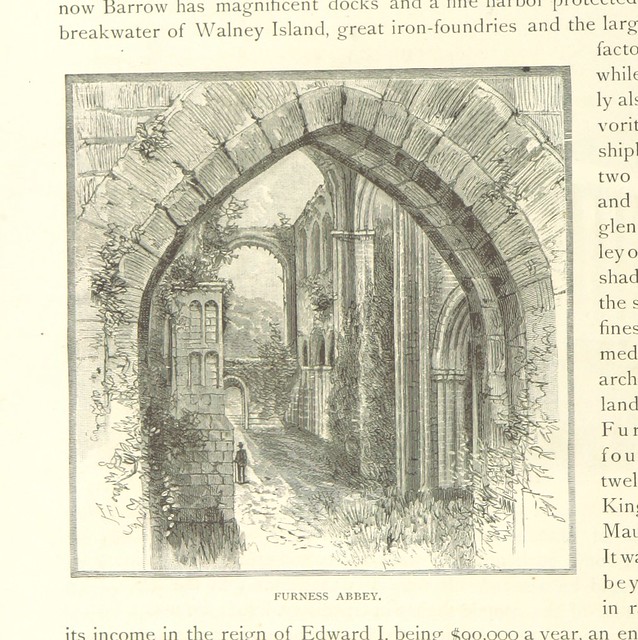
from Flickr (flickr)
Image taken from page 62 of 'England Picturesque and Descriptive ... With ... illustrations'
Pinned by Simon Cotterill
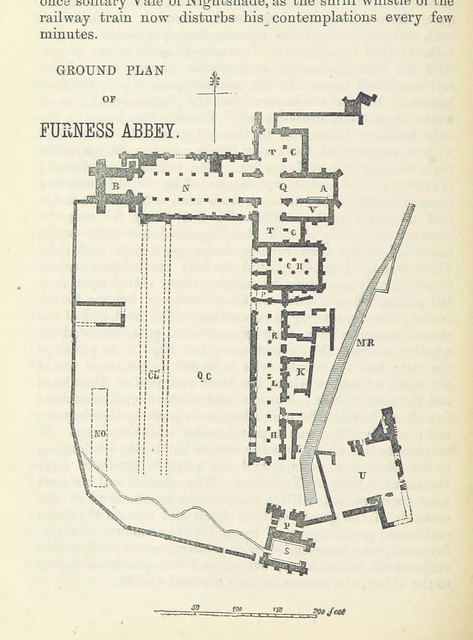
from Flickr (flickr)
Image taken from page 74 of 'Porter's Guide to Blackpool, Fleetwood, Lytham, &c., with a Directory of Blackpool ... Eighth edition'
Pinned by Simon Cotterill
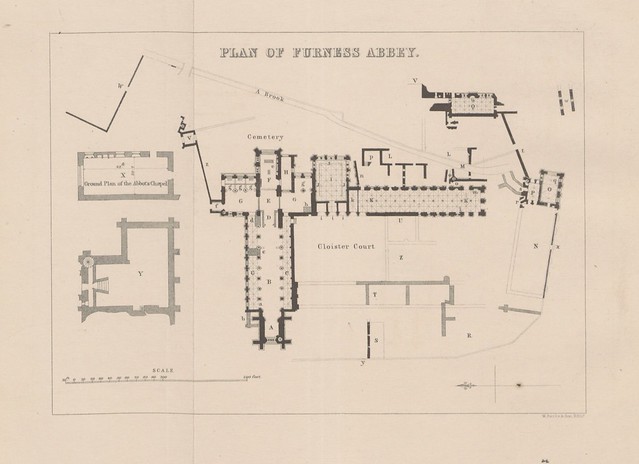
from Flickr (flickr)
Image taken from page 94 of '[Furness Abbey and its neighbourhood.]'
Pinned by Simon Cotterill
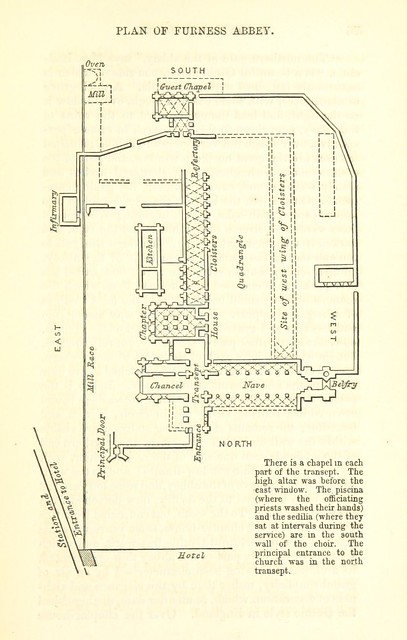
from Flickr (flickr)
Image taken from page 129 of '[Black's Picturesque guide to the English Lakes ... Eighth edition.]'
Pinned by Simon Cotterill
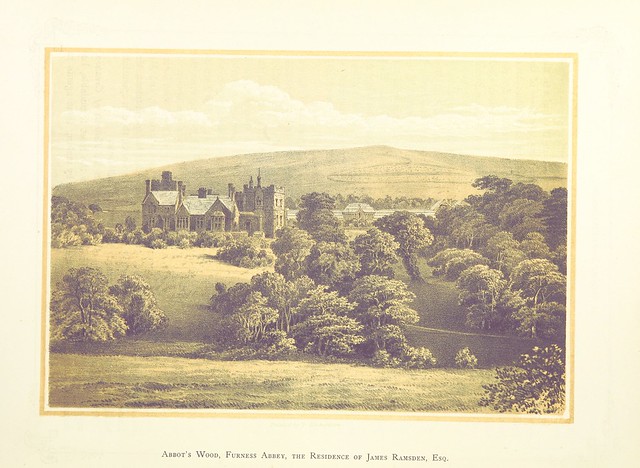
from Flickr (flickr)
Image taken from page 122 of 'Barrow-in-Furness, its history, development, commerce, industries, and institutions ... Illustrated'
Pinned by Simon Cotterill
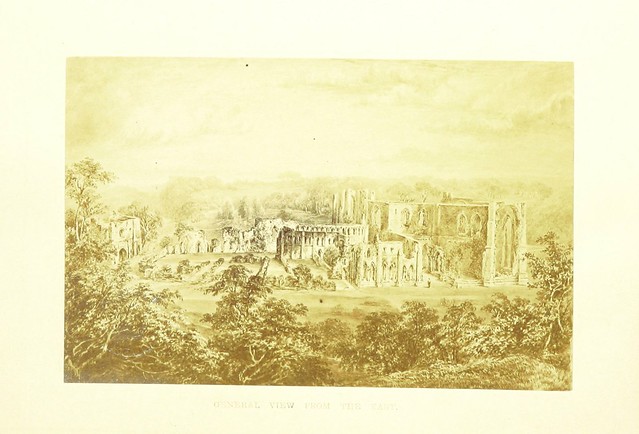
from Flickr (flickr)
Image taken from page 28 of '[Furness Abbey and its neighbourhood.]'
Pinned by Pat Thomson
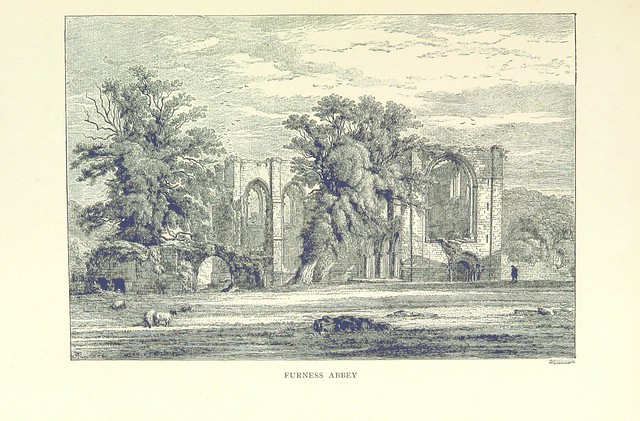
from Flickr (flickr)
Image taken from page 289 of 'Lancashire. Brief historical and descriptive notes, etc'
Pinned by Pat Thomson
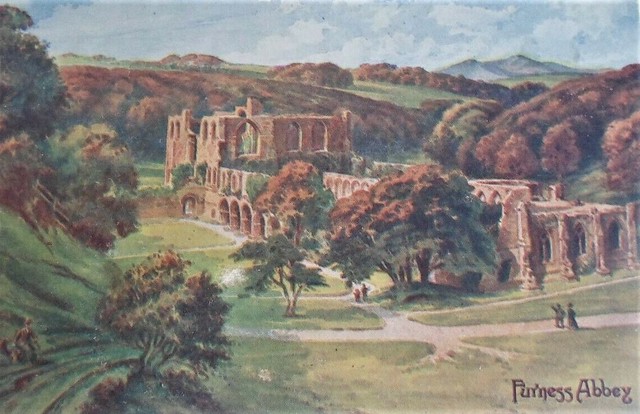
from Flickr (flickr)
Furness Abbey, Pub. Tennyson+Co Ltd. Art Publishers, Leeds §D969
Pinned by Peter Smith
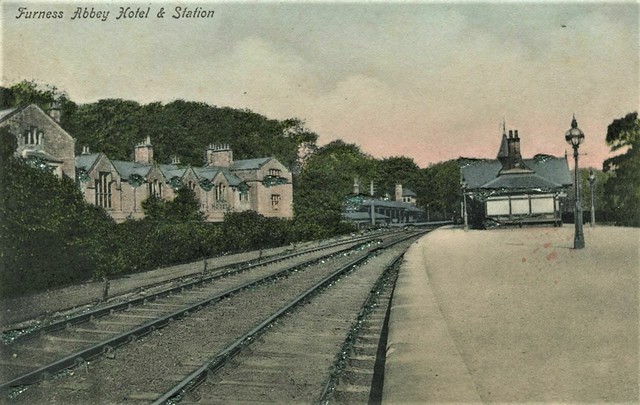
from Flickr (flickr)
FURNESS ABBEY HOTEL & STATION - Cumberland Postcard - RAILWAY (P2698)
Pinned by Peter Smith
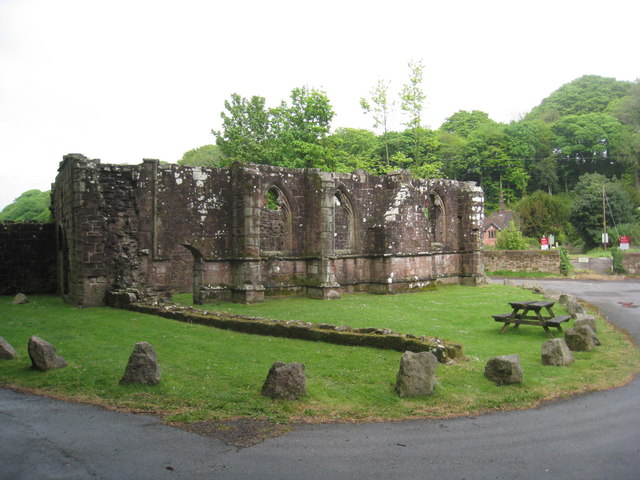
Co-Curate Page
Capella Extra Portas
- Overview Map Street View Inside Capella Extra Portas is a ruined chapel, built in c.1300, which is located on Abbey Approach - the entrance to Furness Abbey in Barrow-in-Furness. The …

Co-Curate Page
Gateway adjoining Capella Extra Portas
- Overview Map Street View The Gateway (a Gothic carriage arch and separate pedestrian gateway) to the abbey precinct of Furness Abbey, is located on Abbey Approach, Barrow-in-Furness. The gateway is …


from Flickr (flickr)
Image taken from page 62 of 'England Picturesque and Descriptive ... With ... illustrations'
Pinned by Simon Cotterill

from Flickr (flickr)
Image taken from page 74 of 'Porter's Guide to Blackpool, Fleetwood, Lytham, &c., with a Directory of Blackpool ... Eighth edition'
Pinned by Simon Cotterill

from Flickr (flickr)
Image taken from page 94 of '[Furness Abbey and its neighbourhood.]'
Pinned by Simon Cotterill

from Flickr (flickr)
Image taken from page 129 of '[Black's Picturesque guide to the English Lakes ... Eighth edition.]'
Pinned by Simon Cotterill

from Flickr (flickr)
Image taken from page 122 of 'Barrow-in-Furness, its history, development, commerce, industries, and institutions ... Illustrated'
Pinned by Simon Cotterill

from Flickr (flickr)
Image taken from page 28 of '[Furness Abbey and its neighbourhood.]'
Pinned by Pat Thomson

from Flickr (flickr)
Image taken from page 289 of 'Lancashire. Brief historical and descriptive notes, etc'
Pinned by Pat Thomson

from Flickr (flickr)
Furness Abbey, Pub. Tennyson+Co Ltd. Art Publishers, Leeds §D969
Pinned by Peter Smith

from Flickr (flickr)
FURNESS ABBEY HOTEL & STATION - Cumberland Postcard - RAILWAY (P2698)
Pinned by Peter Smith

Co-Curate Page
Capella Extra Portas
- Overview Map Street View Inside Capella Extra Portas is a ruined chapel, built in c.1300, which is located on Abbey Approach - the entrance to Furness Abbey in Barrow-in-Furness. The …

